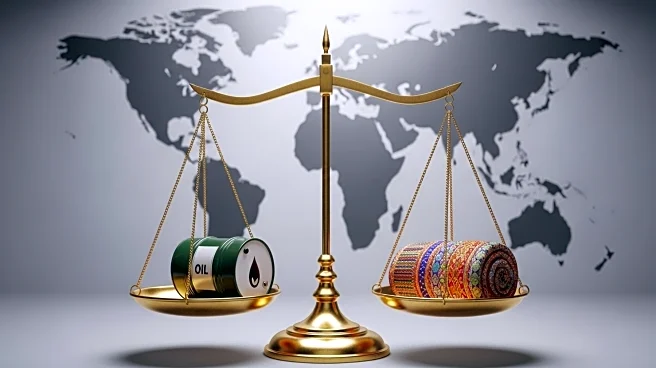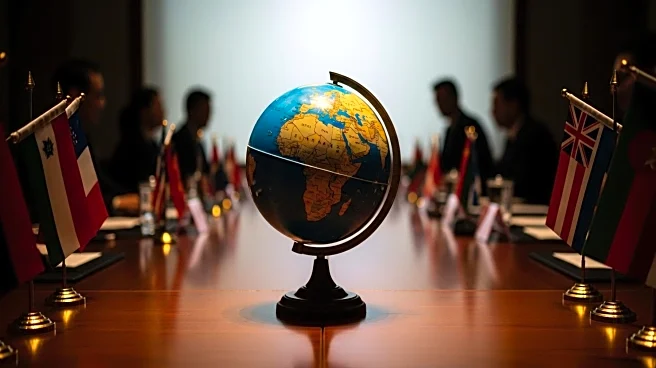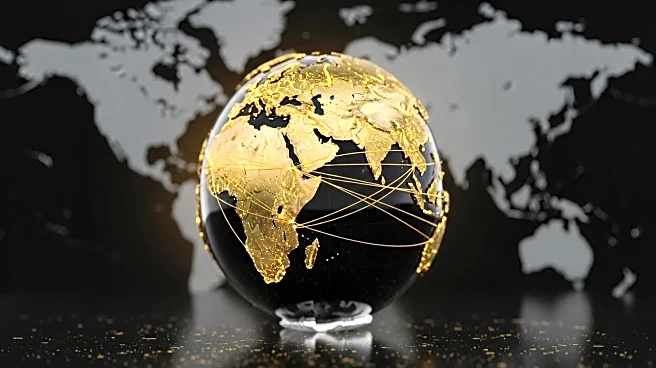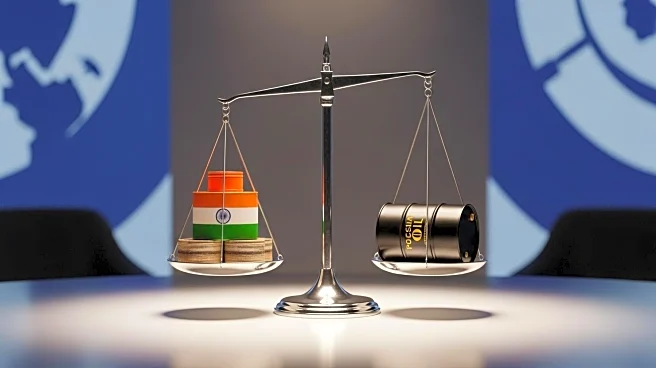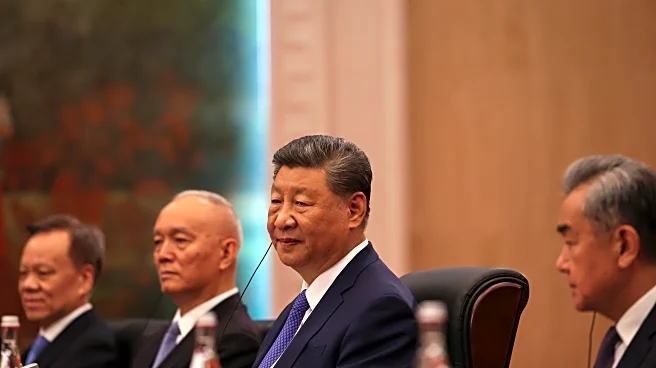What's Happening?
President Trump has imposed a 50% tariff on India due to its significant purchases of Russian oil, a move aimed at discouraging the country from continuing its trade with Russia. This decision comes as Russian President Vladimir Putin faces mounting economic challenges in sustaining the war in Ukraine. The tariffs are part of a broader U.S. strategy to pressure Russia's trading partners and potentially impact Russia's budget, which is already strained by falling oil revenues and high wartime expenditures. The economic situation in Russia is further complicated by inflation and high interest rates, which have stifled growth and investment.
Why It's Important?
The tariffs on India could have significant implications for global oil markets and geopolitical alliances. For Russia, a reduction in oil sales to India could exacerbate its budgetary pressures, potentially forcing it to make difficult economic choices. For India, the tariffs could lead to increased costs and necessitate a reevaluation of its energy sourcing strategies. The move also highlights the U.S.'s strategic use of economic measures to influence international relations and could lead to shifts in global trade dynamics, particularly in the energy sector.
What's Next?
India's response to the tariffs will be crucial in determining the future of its energy relationship with Russia. If India reduces its oil purchases from Russia, it could lead to further economic strain on the Russian budget. Additionally, the U.S. may continue to leverage economic sanctions and tariffs as tools to influence international behavior, potentially affecting other countries involved in trade with Russia. The situation also raises questions about the long-term sustainability of Russia's economic model amid ongoing geopolitical tensions.
